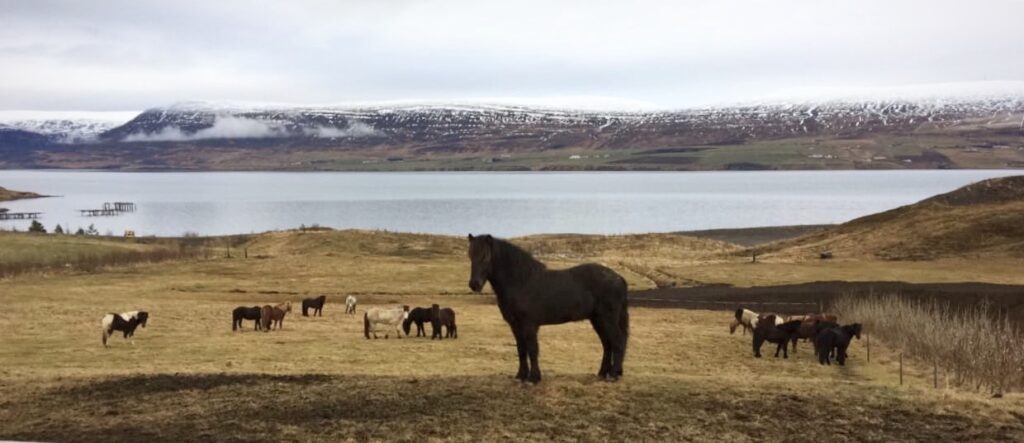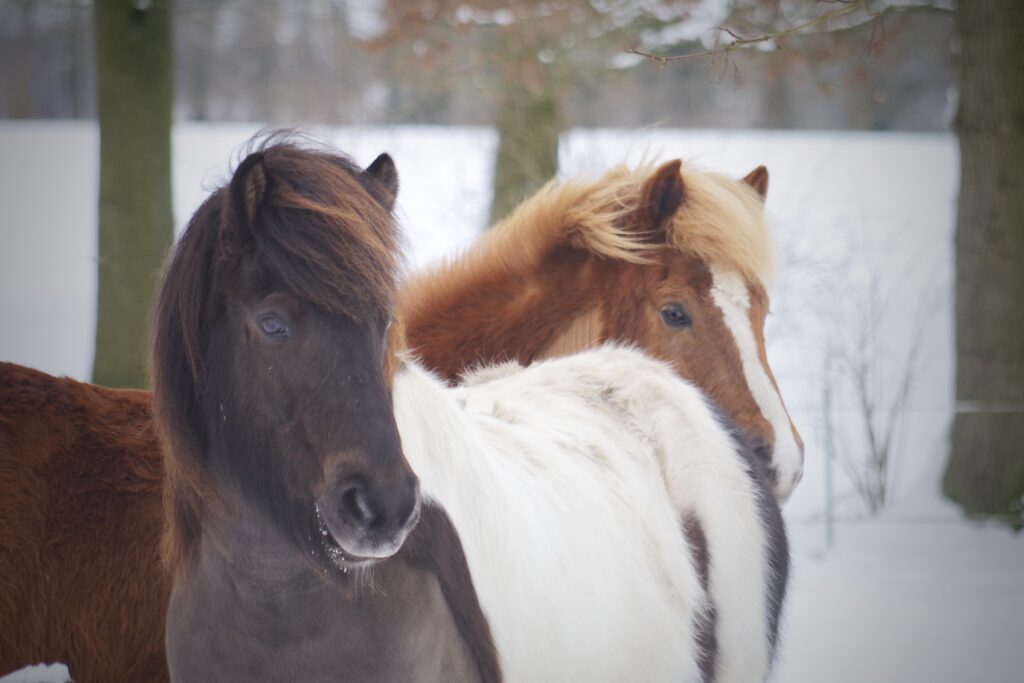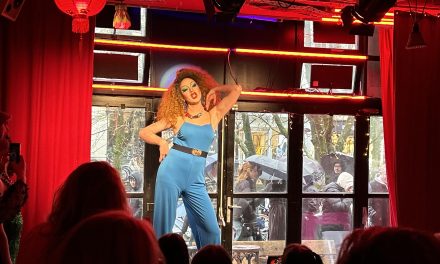
Most horses live in a herd in the rough landcape of Iceland. This protects them against the harsh climate in winter. ©Rikke Santing
Brought to Iceland by the Vikings in the 8th and 9th century was a small horse type with smooth gaits, friendly character and a big will-to-please. They may not look like much, but once you jump in the saddle, you will know why the Vikings selected these horses. Nowadays, the Icelandic horse still has those character traits recognised by the Vikings so many years ago, and more.
Iceland is known as a land of ice and fire, and this reflects in the horses. They are usually cool-headed, but as soon as they are invited to work, the so-called Icelandic fire emerges. This is particularly expressed in the gaits of the horse. Next to the well known walk, trot and canter, Icelandic horses perform tölt and flying pace. The tölt is a comfortable gait because there is always one leg on the ground. Flying pace is a real sensation because of the speed and power it comes with. These special horses were recognised not only by the Vikings, but also by the first parliament of Iceland in 982 AD, when a rule was formed that did not allow any horse to enter the country, and a horse that leaves the country is never allowed to come back; this has kept the breed pure for over 1000 years. Selective breeding and natural selection in Iceland’s harsh nature has brought the horse in its current form: strong, powerful, smart, honest, friendly, very eager to work and with two extra gaits.
Apart from the extra gaits, it’s their character that makes them so attractive for Noortje Grégoire, three times World Championship participant, trainer, instructor and owner of her own stable where she trains and breeds Icelandic horses. “Icelandic horses have the cool mind of a recreational horse, but the temperament of a sports horse, and that makes them very suitable for a large variety of riders; the ones that want to enjoy a relaxed ride outdoors as well as the sports riders. Next to that, the easy care for these strong horses that do not fall sick easily is a big plus point, but this is also supported by the values of many Icelandic horse owners; they believe a horse should be kept outside, in the most natural way, without much glitter and glamour around it, as is often the case with dressage and jumping horses.” This is why most young horses grow up in a herd in large nature areas, mares and stallions separated. This is very important for their communication skills and body development, and gives them a good and healthy start of their lives and career as riding horses.
“They are super sport horses with the very best character.”
“In general, a ‘good’ horse in the world of the Icelandic horses is one that has a strong body for carrying the rider, is brave and not quickly distracted or scared, can adapt to different situations easily, can always connect with the rider, learns quick and easy, moves easily and has a clear beat in the gaits.” Noortje Grégoire believes this to be the perfect horse for her because of their easy going mind yet they are sensitive and full of temperament when riding them.
“The culture around this little horse world fits with the breed; easy going, very fun, social, spectacular and close to nature.”
https://youtu.be/N8Dvx8dgeyo
The International Federation of Icelandic Horse Associations (FEIF) registered more than 90,000 horses in Iceland in 2020, compared to a low population of 317,000 inhabitants. In the Netherlands the number of Icelandic horses is increasing, with 8489 horses and 2286 members in 2020 compared to 1100-1200 members in the year 2000. 2099 registered horses have been transported from Iceland to the Netherlands, of which 1250 are still alive today. The mares are often pregnant from Icelandic’s best stallions. But the horses are not only bred in Iceland, the Netherlands has 160 to 320 new foals each year.

Snerrir frá Vefgrund & Glans frá Fléttuvöllum enjoying the snow. Icelandic horses do not need a blanket in winter due to their thick fur developed in the breed on Iceland due to unpredictable weather, heavy storms and cold temperatures. Often owners clip the chest of their horses so the body can cool down easier during and after training. Icelandic names are often related to Norse gods and the weather. The first name of the horse is usually followed by frá, meaning ‘from’, and then the name of the stable.
Overall, the Icelandic horse is a breed with extra gaits, extra fur,.. and extra fun!



